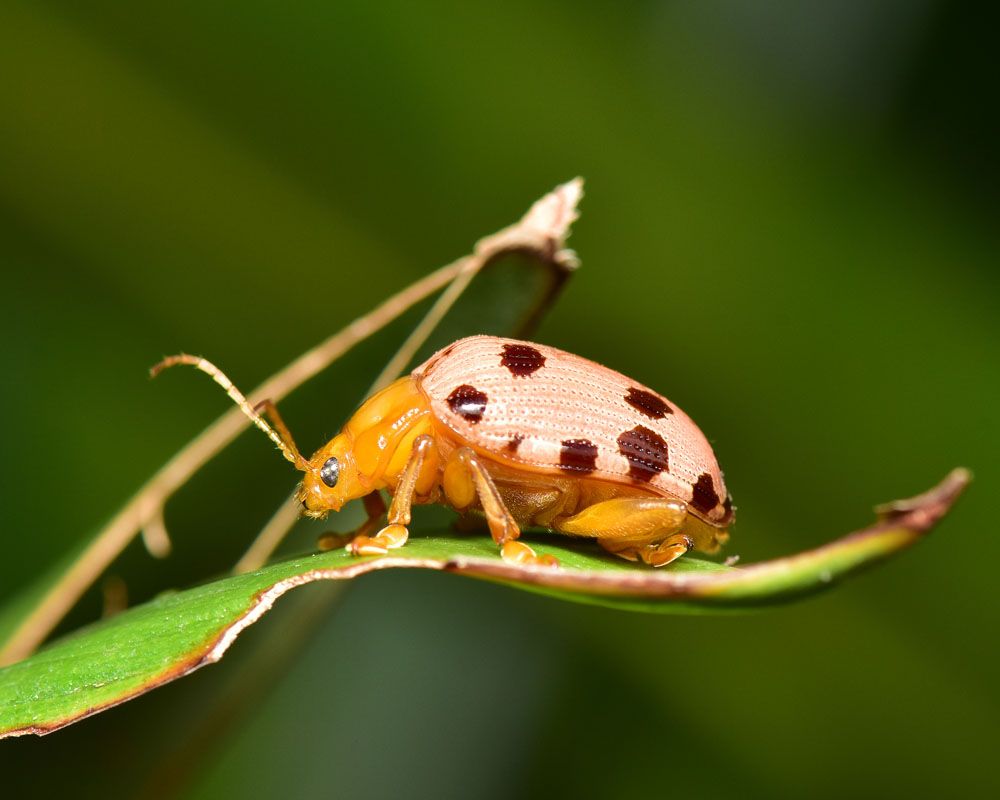
Squash Beetle – Epilachna borealis
Squash Beetle – Epilachna borealis
Scientific name: Epilachna borealis
Common name: Squash beetle, Squash lady beetle
Appearance: Squash beetle is a yellowish-orange beetle with seven large black spots on the forewings and four small spots on the thorax. It ranges in size from 7.4 to 9.8 mm in length. The pupa is a yellow oval caterpillar with spines on its entire back.
Host plants or food: Squash beetles mainly feed on cucurbits, such as cucumbers, squash, pumpkins, melons, and gourds. Occasionally, it also feeds on corn silk, cowpea pods, and lima beans.
Territory: Throughout the Eastern United States
Mode of damage: Squash beetle is a leaf chewer. The larvae exclusively feed on the lower side of the leaves, while the adult feeds on both sides except for the veins. This results in a skeletonized leaf with degraded leaf tissue between the veins.
Habits and life history
Adult Squash beetle overwinters under loose tree bark or plant debris at the edge of the fields. They produce 1 to 2 generations per year.
Besides the foliage, the adults also feed on the rind of fruits, leaving behind spiral scars.
The pupae secrete oily droplets as a defense mechanism to keep the ants and predators away.
The females lay eggs in clusters of 45 on the underside of the leaves in July and hatch into larvae in the next 3 to 4 weeks.
The larvae feed on the foliage and become adults, restarting their lifecycle.
